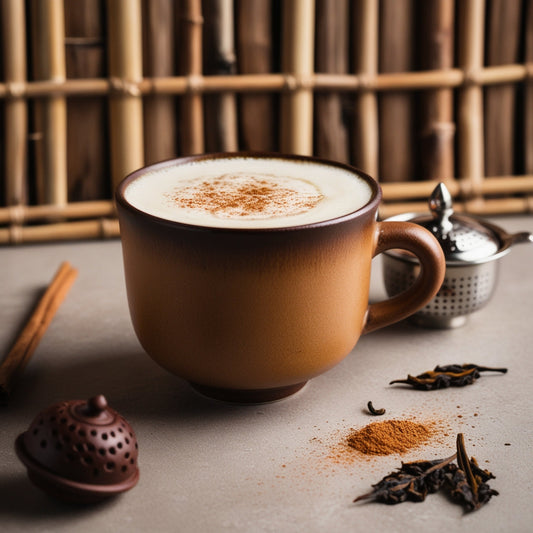Introduction
Imagine a tea that not only delights your taste buds but also brings a multitude of health benefits. Pu-erh tea, a unique fermented beverage from the Yunnan province of China. From its rich history and intricate production process to its diverse flavours and impressive health benefits, Pu-erh stands out as a beverage worth exploring. We will explore what Pu-erh tea can do for you, its composition, and its flavor profile.
Table of Content
- Introduction
- What does Pu-erh do for you?
- What Is Pu-erh Made of?
- What does Pu-erh taste like?
- Conclusion
What does Pu-erh tea do for you?
Pu-erh tea offers numerous health benefits due to its unique compounds. Anti-inflammatory substances like asperglaucide and neoechinulin A are produced during fermentation. Gamma-amino butyric acid (GABA) in Pu-erh can reduce anxiety, and studies suggest it helps prevent osteoporosis, particularly in menopausal women. It promotes brain health, protecting against conditions like epilepsy and dementia, and preserves skin elastin, reducing aging effects. The tea’s antibacterial properties may improve acne. Rich in antioxidants,it lowers LDL cholesterol, improves heart health, manages blood sugar, aids digestion, supports weight loss, and balances gut bacteria, benefiting overall health.

What is Pu-erh tea Made of?
Pu-erh tea derives from the leaves of the Camellia sinensis plant, particularly the Yunnan big leaf variety. They typically harvest the leaves in spring and then let them wither and dry in the sun. After drying, they roll and twist the leaves to break down their cell wall, which aids the fermentation process.
What does Pu-erh tea taste like?
Pu-erh offers various flavours, such as sweet, bitter, astringent, sour, earthy, or even tasteless, with multiple flavours often present in one steeping and evolving over time. Raw Pu-erh (sheng cha) typically has a strong green vegetal and bitter flavour that mellows and gains a delightful aged aroma over years. Ripe Pu-erh (shu cha), fully fermented, loses much of its bitterness and astringency, becoming earthy, or woody. High-quality aged Pu-erh should be mellow, smooth, and offer a sweet aftertaste.

Conclusion
Pu-erh tea offers a remarkable combination of rich flavours and extensive health benefits, making it a truly unique beverage. From its ability to aid in digestion and weight management to its role in reducing anxiety and promoting heart health, Pu-erh tea has much to offer. Whether you are a tea connoisseur or a health enthusiast, exploring Pu-erh tea can be a rewarding experience. Discover the wonders of Pu-erh tea with Puerh Craft and make it a part of your daily routine for a healthier life. Try a cup today and experience its benefits first-hand!
Q&A
Q. How does Pu-erh benefit health?
A. Pu-erh tea offers a wide range of health benefits such as reducing cholesterol, improving heart health, aiding digestion, promoting weight loss, and balancing gut bacteria. It also contains antioxidants that support overall health.
Q. What is Pu-erh made of?
A. Pu-erh tea derives from the leaves of the Camellia sinensis plant, particularly the Yunnan big leaf variety. The leaves undergo a process of withering, sun-drying, rolling, and fermentation to achieve their distinctive flavours and health properties.
Q. What does Pu-erh taste like?
A. Pu-erh has flavours ranging from sweet, bitter, astringent, to earthy or nutty, depending on whether it's raw (sheng cha) or ripe (shu cha). The taste evolves over time, with aged Pu-erh developing a mellow and smooth profile.
Q. How is Pu-erh different from others?
A. Unlike most, Pu-erh undergoes a unique fermentation process that distinguishes it. This fermentation not only alters its flavor but also enhances its health benefits, such as anti-inflammatory properties and GABA content.
Q. How should Pu-erh be stored and brewed for best results?
A. Store it away from moisture, light, and strong odors to maintain its flavor and health benefits. You can brew it multiple times, with each steeping offering a different taste profile. Generally, using water just below boiling point and steeping for a few minutes produces the best results.






